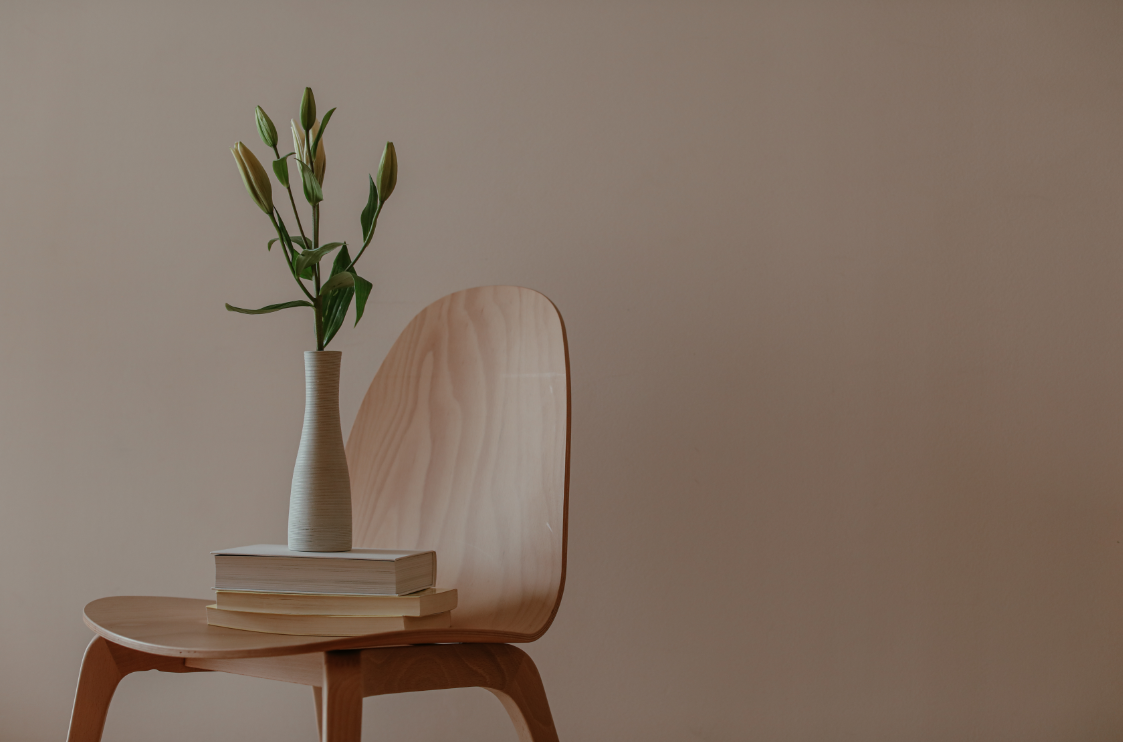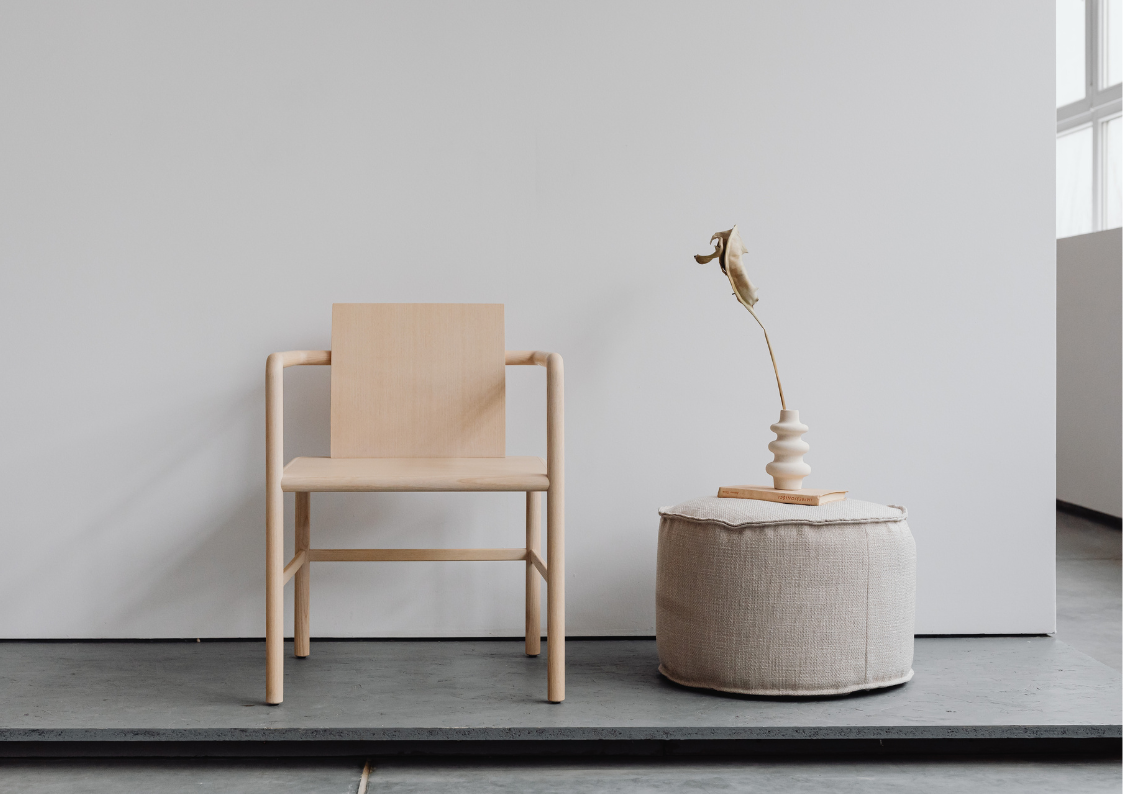Adding tables, chairs, and sofas to empty rooms is only one aspect of furnishing your home. It is important to design a space that reflects your preferences, way of life, and character. A space can be improved with the correct furniture, which makes it more aesthetically pleasing and functional. How do you go about choosing the ideal furnishings for your sanctuary, then? To assist you navigate this thrilling voyage, here is a step-by-step manual.

-
Understand Your Space
Before diving into the world of furniture shopping, assess the available space. Measure rooms, noting down dimensions. Understand the flow of each room and its primary function.
-
Determine Your Style
Are you a minimalist, favoring sleek, modern designs? Or do you lean towards a more vintage, rustic feel? Knowing your preferred style can significantly narrow down choices, making the selection process more straightforward.
-
Functionality is Key
Consider the purpose of each piece. If you entertain guests often, invest in a good-quality, sizeable dining table. For movie buffs, a comfortable sofa and a well-positioned TV unit might be priorities.
-
Quality Over Quantity
It's better to have fewer pieces of high-quality furniture than to overcrowd with inferior ones. Look for durability, especially for frequently used items.
-
Plan Your Budget
Furniture can range from surprisingly affordable to ultra-luxe. Set a budget beforehand, but be prepared to invest a bit more in essential pieces, ensuring they last longer.
-
Colors Matter
While it's tempting to go with trending colors, think long term. Neutral shades for significant pieces can be more versatile, allowing you to play with vibrant accents using cushions, throws, and decor.
-
Consider Maintenance
Some materials look stunning but require frequent maintenance. If you have young kids or pets, go for furniture that's easy to clean and maintain.
-
Test Before Buying
It might look perfect, but is it comfortable? If possible, visit a showroom to test out sofas, chairs, and mattresses. Sit, recline, or even lie down to get a feel.
-
Think Eco-friendly
With rising environmental concerns, consider sustainable furniture options. Bamboo, reclaimed wood, and other sustainable materials not only look good but also reduce your carbon footprint.
-
Flexibility and Adaptability
Choose furniture that can adapt to different spaces or purposes. For instance, a sofa-cum-bed is perfect for guests, and an extendable dining table can adjust based on the number of diners.
-
Delivery and Assembly
Ensure that the store delivers to your location. Some furniture might require assembly, so check if that service is offered, especially for intricate pieces.
A lovely fusion of art and science goes into selecting furniture for your home. Functionality and comfort should never be sacrificed, even when aesthetics are important. Remember that your house is a reflection of who you are. Each piece of furniture is not only practical; it also conveys a narrative, your narrative. Making careful decisions will enable you to create a sanctuary that is both warm and expressive. Happy furnishing!
Furniture According to Vaastu: Placement and Decoration Tips
An old architectural and planning system from India called Vaastu Shastra provides guidelines for designing surroundings that are peaceful and beneficial to health. Many people think that applying Vaastu principles to a home will make it prosperous and happy. Here are some essential guidelines for Vaastu furniture arrangement and decoration:
-
Direction Matters:
- Living Room: North or northeast are considered auspicious. Ensure sofas and other seating furniture are placed in the west or south direction. Guests should ideally face north or east.
- Bedroom: Beds should be placed so that one sleeps with their head towards the south or east. Avoid placing the bed directly under a beam.
- Dining Room: North or west is recommended. While eating, the head should be towards the east or north.
- Study/Workspace: The study table should be placed in such a way that the person faces east or north. Bookshelves should be in the east, north, or northeast.
-
Furniture Shape:
Rectangular or square-shaped furniture is recommended as it represents stability. Avoid circular, oval, or any other irregular shaped furniture as it's believed to bring instability.
-
Furniture Material:
Wooden furniture is highly recommended in Vaastu due to its natural properties and earthiness. Metal furniture should be avoided in bedrooms and meditation spaces as it can introduce rigidity.
-
Positioning of Decorative Items:
- Mirrors in the bedroom should be avoided, especially if they reflect the bed. In other rooms, place them on the north or east walls.
- Indoor plants promote positivity. However, cacti or thorny plants should be avoided indoors.
- Paintings depicting water or water bodies should be hung on the north or east walls. Avoid pictures depicting violence, war, or sorrow.
-
Keep the Center Open:
Vaastu emphasizes the importance of 'Brahmasthan' or the central part of a house. This area should be kept open and clutter-free. Avoid placing heavy furniture in the center.
-
Maintain Symmetry:
Symmetry is believed to bring balance. Try to maintain a symmetrical arrangement in your rooms.
-
Avoid Blocking Pathways:
The main entrance and pathways should be clear of any furniture, ensuring a free flow of energy.
-
Upholstery and Colors:
Choose colors that enhance positivity. For example:
- Green represents nature and healing — suitable for living and study rooms.
- Blue, being calming, can be chosen for bedrooms.
- Yellow or golden shades can be used in dining areas for a sense of abundance.
-
Regular Maintenance:
Damaged furniture or upholstery can attract negative energies. Repair or replace them promptly.
-
Separation of Work and Rest Spaces:
Avoid placing work desks or study tables in bedrooms to maintain a separation of energies. This ensures peaceful rest.


You can create a sense of balance and harmony in your living spaces by arranging your furniture in accordance with Vaastu. Although these are only broad suggestions, it's always a good idea to speak with a Vaastu specialist for advice that is personalized to your property. You and your family should always keep in mind that the ultimate goal is to establish a happy, tranquil, and prosperous atmosphere.
How to Buy Good Quality Furniture: Tips and Recommendations
Purchasing good quality furniture is an investment. Ensuring you get value for your money requires a careful balance of research, observation, and intuition. Here's a guide to help you make informed choices:

How to Buy Good Quality Furniture : Tips and Recommendations
-
Determine Your Needs:
- Purpose: Identify the primary use of the furniture. Is it for daily use, occasional, or decorative purposes?
- Size: Measure your space to ensure the furniture fits well. Consider pathways, doors, and other furniture placements.
-
Understand Furniture Construction:
- Frame: Look for furniture with a sturdy frame. For instance, solid hardwood frames are more durable than those made from particleboard.
- Joinery: Check the joints. Dowels, dovetail, mortise-and-tenon, and reinforced corners often indicate good craftsmanship.
-
Check the Upholstery and Fillings:
- Material: Natural materials like leather and cotton are durable, but synthetic options like microfiber can also offer good longevity and are easier to clean.
- Cushioning: Quality furniture usually has dense, closely packed, and resilient foam.
-
Observe the Finish:
A good finish is an indicator of quality. Ensure there are no bubbles, cracks, or irregularities, especially in wooden furniture.
-
Test It Out:
Sit on chairs and sofas. Lie down on beds. Open and close drawers. Quality furniture should feel sturdy and comfortable.
-
Read Reviews and Ask for Recommendations:
- Online reviews can provide insight into durability, comfort, and customer service.
- Word of mouth is invaluable. Ask friends or family about their experiences with particular brands or stores.
-
Check the Warranty:
Quality manufacturers stand by their products. A decent warranty can be an indicator of quality.
-
Buy from Reputable Retailers or Directly from Manufacturers:
- Brick-and-Mortar Stores: They allow you to physically inspect and test the furniture. Examples include IKEA, Ashley Furniture, La-Z-Boy, and local independent stores.
- Online Retailers: Websites like Wayfair, Amazon, Overstock, and West Elm offer vast selections. Ensure to read product details, reviews, and return policies.
- Direct from Craftsmen: If you're looking for unique, artisanal pieces, consider purchasing directly from local craftsmen or specialized workshops.
-
Seasonal Sales and Discounts:
Quality furniture can sometimes be pricey. Waiting for seasonal sales, like Black Friday or end-of-season clearance sales, can result in significant savings.
-
Sustainable and Ethical Choices:
With growing awareness about environmental concerns, consider furniture made from sustainable materials or practices. Brands like Greenington and Simbly prioritize eco-friendliness.
-
Consider Second-hand or Vintage:
Quality furniture lasts for decades. Antique stores, thrift shops, or online platforms like Craigslist and Facebook Marketplace can have hidden gems. Ensure to inspect for wear, tear, and structural integrity.
Durability, comfort, and aesthetics are all guaranteed when purchasing high-quality furniture. Even if the procedure could take some time and research, there is no comparison to the delight of owning timeless pieces that will last for years. Keep in mind that the genuine quality of furniture is not solely based on look, but also on the construction, materials, and craftsmanship.
In Conclusion
Practicality, beauty, and personal expression are all factors to consider while choosing and arranging furniture for a home. Not only are empty areas to be filled, but also an atmosphere that reflects comfort and personality must be created. Homeowners can design spaces that are both useful and a reflection of their own interests by putting an emphasis on quality, making sure everything is in the right place, and adding personal touches. Ultimately, the house transcends its initial purpose as a place to live and develops into a haven for memories, feelings, and stories, where each piece of furniture adds to the overall story.
